ADRIÁN BALSECA IN ITALY – NATURE, POWER AND EXPLOITATION
PAV Parco Arte Vivente presented the first solo exhibition in Italy by the Ecuadorian artist Adrián Balseca (1989) curated by Marco Scotini. The exhibition is an investigation into the role of the human being as an actor within the ecosystem, focussing on the relationships between the economy, ecology and memory as well as on the dynamics of power linked to the extractivism and exploitation of nature.
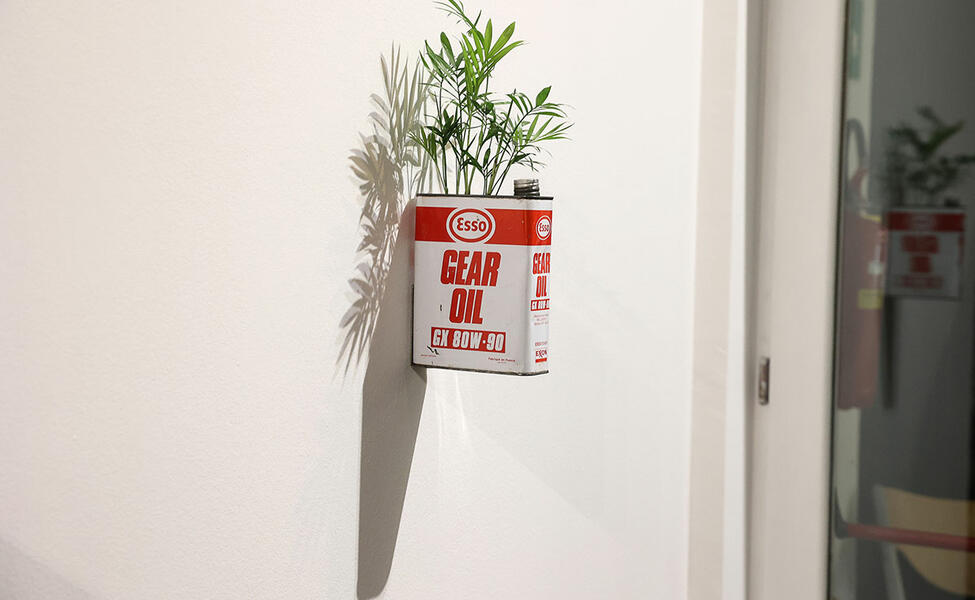
Operating by means of a number of narratives that combine real events, historic archives, ethno-fiction and memory, Adrián Balseca presents a series of projects, created over the past ten years, that focus on the local histories of his country of origin. In 2008, with the implementation of Article 71, Ecuador became the first country in the world to recognize nature as a subject with rights at a constitutional level: “Nature, or Pacha Mama, where life is reproduced and occurs, has the right to integral respect for its existence and for the maintenance and regeneration of its life cycles, structure, functions and evolutionary processes”. Despite the country’s constitution legally protecting all the areas with the most biodiversity on the planet, extraction activities have not diminished and neither has the inherent social and environmental damage they effect. Within this context, many thinkers in Ecuador have developed socio-economic concepts of degrowth, highlighting the biophysical limitations of the neo-liberal model and proposing other opportunities for development which aim to mitigate and reduce the impact that human beings’ actions have on climate change.
The exhibition’s title, Cambio de fuerza, refers to the slogan “La fuerza del cambio” [the power of change] used towards the end of the 1970s during Jaime Roldós Aguilera’s electoral campaign – the first president to be democratically elected after the period of dictatorship and who remained in position from 1979 to 1981. Redirecting the content of the expression, the artist asks himself how far it is possible to push this political “desire” to convert such hope of change into a more pragmatic idea, effectively extending it into the field of political ecology.
Inside the PAV’s greenhouse, is PLANTASIA OIL Co. (2021-ongoing), an installation consisting of barrels and cans that once contained motor oil and industrial lubricants. In these, various species of plants grow, inserting themselves into the detritus produced by the petrol economy that sees the city as a symbol of modernity, thereby highlighting the determination of nature to rebuild life amongst the thresholds and liminal spaces uninhabited by humans. The exhibition continues with The Unbalanced Land (2019), a sound installation that includes sculptural objects and a photographic series. The origin or this work lies in the travel account by the British scientist and explorer, Edward Whymper, Travels Amongst the Great Andes of the Equator (1892), which reflects on the history and transformations of the capitalist and colonial systems in Latin America. Lastly, The Skin of Labour (2016) is an installation that derives from the observation of an endemic forest of Heva Brasiliensis (rubber plants) present in the vital territory of Amazonian Ecuador where, with the rise of the rubber industry which began at the end of the 19th century, the indigenous lands were expropriated for the purpose of extracting the derivates of this vegetable species.
By starting with the specific nature of Ecuador’s ecosystems, Adrián Balseca’s exhibition, Cambio de fuerza, raises questions of global relevance, revealing the environmental and cultural responsibilities of Western, neo-liberal economies through the deconstruction of colonial narratives and the condemnation of the dynamics of power and exploitation.
Adrián Balseca (Quito, Ecuador, 1989). Lives and works in Buenos Aires, Argentina. Some of his most recent exhibitions are: Nyctalopia (Void Art Centre, Derry, 2023); In Praise of Darkness, 55° Visions Du Réel International Film Festival (Nyon, 2024); Critical Landscapes: Selected Works from the Ella Fontanals-Cisneros Collection (MCA Denver, Denver, 2023); ROUTING RUBBER (New York, 2024; The genetically altered seed breaks the rhythm of an earthly music-Encounters over Several Plants (TATE Modern, London, 2022); Who Tells a Tale Adds a Tail: Latin America and Contemporary Art (Denver Art Museum, Denver, 2022); San Paolo 34th Biennale: Faz escuro mas eu canto (Padiglione Ciccillo Matarazzo, San Paolo, 2021); amongst others.
The exhibition, Cambio de fuerza, has been created in collaboration with Galeria Madragoa (Lisbon) and with the support of the Compagnia di San Paolo, the Fondazione CRT, the Regione Piemonte and the City of Turin.
Related Topics
May interest you
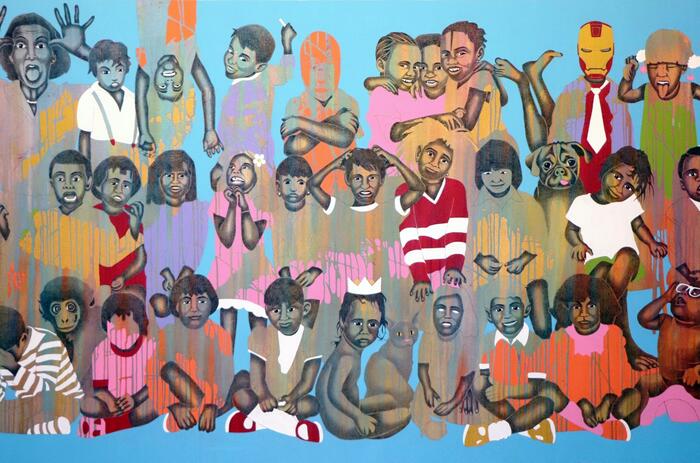
Noutoupatou, Mondes caribéens en mouvement is the collective exhibition organized by A plus A Gallery and School for Curatorial Studies Venice, in collaboration with Campus Caraïbéen des Arts and curated by Paola Lavra. The exhibition, supported by the Institut français, coincides with the closing of the 60th International Art Exhibition, La Biennale di Venezia.

Noutoupatou, Mondes caribéens en mouvement is the collective exhibition organized by A plus A Gallery and School for Curatorial Studies Venice, in collaboration with Campus Caraïbéen des Arts and curated by Paola Lavra. The exhibition, supported by the Institut français, coincides with the closing of the 60th International Art Exhibition, La Biennale di Venezia.
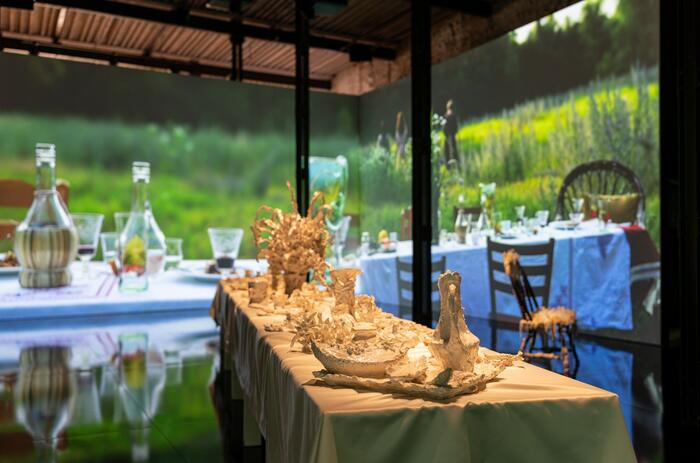
The Mexico Pavilion at the Venice Biennale 2024 proposes an immersive experience that invites the viewer to reflect on the act of migrating and its impact on identity and sense of belonging. As we marched away, we were always coming back is Erick Meyenberg's project curated by Tania Ragasol. It includes elements created in Mexico, Italy and Albania.
THE PATH OF MEMORIES – MEXICO AT THE BIENNALE
The Mexico Pavilion at the Venice Biennale 2024 proposes an immersive experience that invites the viewer to reflect on the act of migrating and its impact on identity and sense of belonging. As we marched away, we were always coming back is Erick Meyenberg's project curated by Tania Ragasol. It includes elements created in Mexico, Italy and Albania.
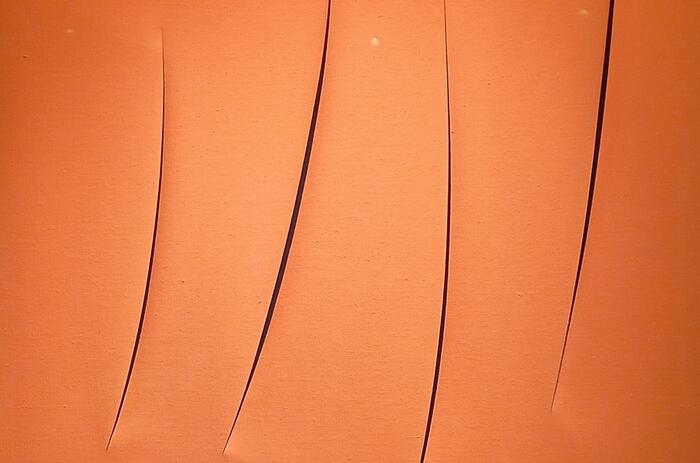
Lucio Fontana made one of the most extraordinary and radical gestures of modern art in 1958 when he cut the surface of a monochromatic canvas with a razor blade. The exhibition “Il y a eu un futur- Un Futuro c'é stato” at the Musée Soulage, Rodez, revisits the legacy of this artist and offers a survey of his entire oeuvre, before and after the war, in Argentina and Italy.
LUCIO FONTANA. IL Y A BIEN EU UN FUTUR - UN FUTURO C'É STATO
Lucio Fontana made one of the most extraordinary and radical gestures of modern art in 1958 when he cut the surface of a monochromatic canvas with a razor blade. The exhibition “Il y a eu un futur- Un Futuro c'é stato” at the Musée Soulage, Rodez, revisits the legacy of this artist and offers a survey of his entire oeuvre, before and after the war, in Argentina and Italy.
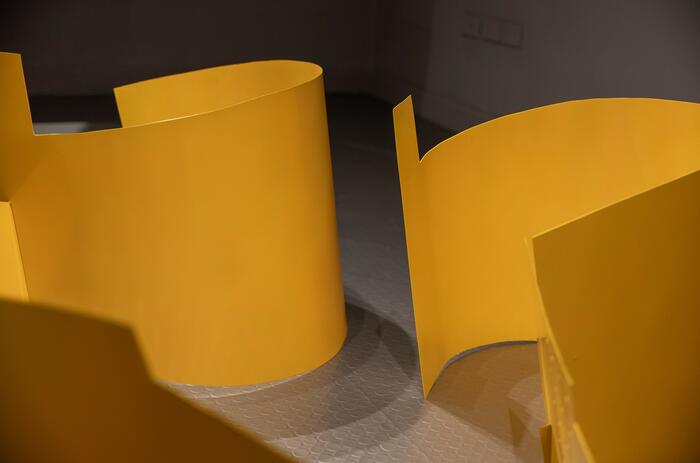
Nélida Mendoza is an artist who was born in Paraguay, but lived in several parts of the world, including Argentina and Italy. She is presenting the exhibition Fuerte Olimpo and Other Stories at the gallery K / Arte y Naturaleza during the Pinta Sud | ASU 2024 art week.
NÉLIDA MENDOZA'S IDENTITY SYSTEMS
Nélida Mendoza is an artist who was born in Paraguay, but lived in several parts of the world, including Argentina and Italy. She is presenting the exhibition Fuerte Olimpo and Other Stories at the gallery K / Arte y Naturaleza during the Pinta Sud | ASU 2024 art week.
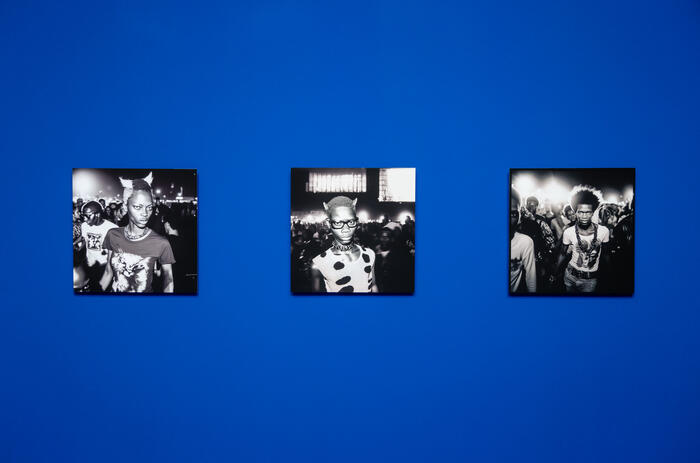
The Museo de Arte Moderno de Buenos Aires presents two exhibitions: the first show in Argentina by US artist Onome Ekeh Especulaciones (Speculations); and El ritmo es el mejor orden (Rhythm is the best order), which brings together a group of recent drawings by Argentine artist Sofía Bohtlingk.
DOUBLE OPENING AT THE MUSEO DE ARTE MODERNO: ONOME EKEH AND SOFÍA BOHTLINGK
The Museo de Arte Moderno de Buenos Aires presents two exhibitions: the first show in Argentina by US artist Onome Ekeh Especulaciones (Speculations); and El ritmo es el mejor orden (Rhythm is the best order), which brings together a group of recent drawings by Argentine artist Sofía Bohtlingk.
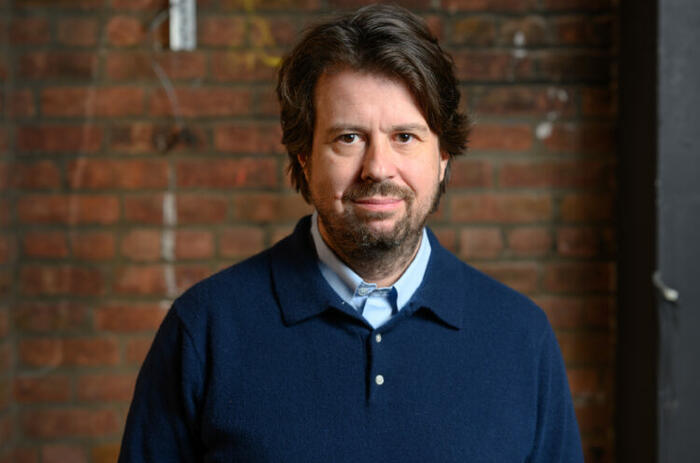
Malba announced that Rodrigo Moura (Belo Horizonte, Minas Gerais, Brazil, 1975) will be the museum's new artistic director. With a solid background in important cultural institutions and an internationally renowned Latin American curator, Moura will be responsible for giving the museum visibility and presence on a global level, broadening the understanding and scope of the Collection and developing the program of temporary exhibitions at Malba and Malba Puertos.
RODRIGO MOURA WILL BE MALBA'S NEW ARTISTIC DIRECTOR
Malba announced that Rodrigo Moura (Belo Horizonte, Minas Gerais, Brazil, 1975) will be the museum's new artistic director. With a solid background in important cultural institutions and an internationally renowned Latin American curator, Moura will be responsible for giving the museum visibility and presence on a global level, broadening the understanding and scope of the Collection and developing the program of temporary exhibitions at Malba and Malba Puertos.
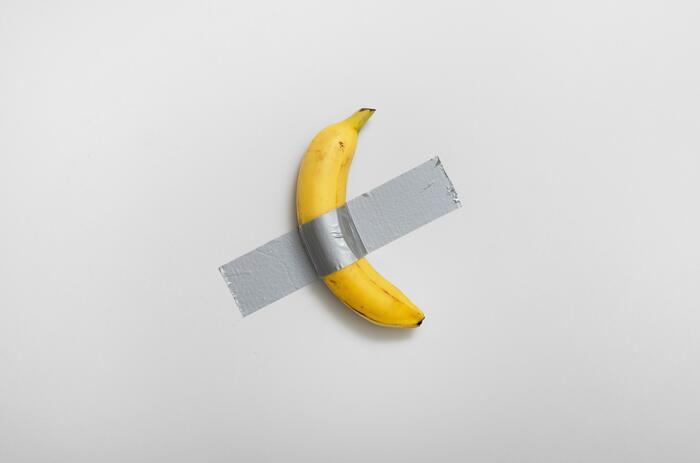
The November auctions of Modern and Contemporary Art in New York, long considered barometers of the art market’s health, showcased striking contrasts last week, revealing both the enduring power of exceptional art and the market’s appetite for spectacle.
NOVEMBER AUCTION HIGHLIGHTS: HOW A BANANA STOLE THE SPOTLIGHT
The November auctions of Modern and Contemporary Art in New York, long considered barometers of the art market’s health, showcased striking contrasts last week, revealing both the enduring power of exceptional art and the market’s appetite for spectacle.

Noutoupatou, Mondes caribéens en mouvement is the collective exhibition organized by A plus A Gallery and School for Curatorial Studies Venice, in collaboration with Campus Caraïbéen des Arts and curated by Paola Lavra. The exhibition, supported by the Institut français, coincides with the closing of the 60th International Art Exhibition, La Biennale di Venezia.

The Mexico Pavilion at the Venice Biennale 2024 proposes an immersive experience that invites the viewer to reflect on the act of migrating and its impact on identity and sense of belonging. As we marched away, we were always coming back is Erick Meyenberg's project curated by Tania Ragasol. It includes elements created in Mexico, Italy and Albania.
THE PATH OF MEMORIES – MEXICO AT THE BIENNALE
The Mexico Pavilion at the Venice Biennale 2024 proposes an immersive experience that invites the viewer to reflect on the act of migrating and its impact on identity and sense of belonging. As we marched away, we were always coming back is Erick Meyenberg's project curated by Tania Ragasol. It includes elements created in Mexico, Italy and Albania.

Lucio Fontana made one of the most extraordinary and radical gestures of modern art in 1958 when he cut the surface of a monochromatic canvas with a razor blade. The exhibition “Il y a eu un futur- Un Futuro c'é stato” at the Musée Soulage, Rodez, revisits the legacy of this artist and offers a survey of his entire oeuvre, before and after the war, in Argentina and Italy.
LUCIO FONTANA. IL Y A BIEN EU UN FUTUR - UN FUTURO C'É STATO
Lucio Fontana made one of the most extraordinary and radical gestures of modern art in 1958 when he cut the surface of a monochromatic canvas with a razor blade. The exhibition “Il y a eu un futur- Un Futuro c'é stato” at the Musée Soulage, Rodez, revisits the legacy of this artist and offers a survey of his entire oeuvre, before and after the war, in Argentina and Italy.

Nélida Mendoza is an artist who was born in Paraguay, but lived in several parts of the world, including Argentina and Italy. She is presenting the exhibition Fuerte Olimpo and Other Stories at the gallery K / Arte y Naturaleza during the Pinta Sud | ASU 2024 art week.
NÉLIDA MENDOZA'S IDENTITY SYSTEMS
Nélida Mendoza is an artist who was born in Paraguay, but lived in several parts of the world, including Argentina and Italy. She is presenting the exhibition Fuerte Olimpo and Other Stories at the gallery K / Arte y Naturaleza during the Pinta Sud | ASU 2024 art week.

The Museo de Arte Moderno de Buenos Aires presents two exhibitions: the first show in Argentina by US artist Onome Ekeh Especulaciones (Speculations); and El ritmo es el mejor orden (Rhythm is the best order), which brings together a group of recent drawings by Argentine artist Sofía Bohtlingk.
DOUBLE OPENING AT THE MUSEO DE ARTE MODERNO: ONOME EKEH AND SOFÍA BOHTLINGK
The Museo de Arte Moderno de Buenos Aires presents two exhibitions: the first show in Argentina by US artist Onome Ekeh Especulaciones (Speculations); and El ritmo es el mejor orden (Rhythm is the best order), which brings together a group of recent drawings by Argentine artist Sofía Bohtlingk.

Malba announced that Rodrigo Moura (Belo Horizonte, Minas Gerais, Brazil, 1975) will be the museum's new artistic director. With a solid background in important cultural institutions and an internationally renowned Latin American curator, Moura will be responsible for giving the museum visibility and presence on a global level, broadening the understanding and scope of the Collection and developing the program of temporary exhibitions at Malba and Malba Puertos.
RODRIGO MOURA WILL BE MALBA'S NEW ARTISTIC DIRECTOR
Malba announced that Rodrigo Moura (Belo Horizonte, Minas Gerais, Brazil, 1975) will be the museum's new artistic director. With a solid background in important cultural institutions and an internationally renowned Latin American curator, Moura will be responsible for giving the museum visibility and presence on a global level, broadening the understanding and scope of the Collection and developing the program of temporary exhibitions at Malba and Malba Puertos.

The November auctions of Modern and Contemporary Art in New York, long considered barometers of the art market’s health, showcased striking contrasts last week, revealing both the enduring power of exceptional art and the market’s appetite for spectacle.
NOVEMBER AUCTION HIGHLIGHTS: HOW A BANANA STOLE THE SPOTLIGHT
The November auctions of Modern and Contemporary Art in New York, long considered barometers of the art market’s health, showcased striking contrasts last week, revealing both the enduring power of exceptional art and the market’s appetite for spectacle.

Noutoupatou, Mondes caribéens en mouvement is the collective exhibition organized by A plus A Gallery and School for Curatorial Studies Venice, in collaboration with Campus Caraïbéen des Arts and curated by Paola Lavra. The exhibition, supported by the Institut français, coincides with the closing of the 60th International Art Exhibition, La Biennale di Venezia.

The Mexico Pavilion at the Venice Biennale 2024 proposes an immersive experience that invites the viewer to reflect on the act of migrating and its impact on identity and sense of belonging. As we marched away, we were always coming back is Erick Meyenberg's project curated by Tania Ragasol. It includes elements created in Mexico, Italy and Albania.
THE PATH OF MEMORIES – MEXICO AT THE BIENNALE
The Mexico Pavilion at the Venice Biennale 2024 proposes an immersive experience that invites the viewer to reflect on the act of migrating and its impact on identity and sense of belonging. As we marched away, we were always coming back is Erick Meyenberg's project curated by Tania Ragasol. It includes elements created in Mexico, Italy and Albania.

Lucio Fontana made one of the most extraordinary and radical gestures of modern art in 1958 when he cut the surface of a monochromatic canvas with a razor blade. The exhibition “Il y a eu un futur- Un Futuro c'é stato” at the Musée Soulage, Rodez, revisits the legacy of this artist and offers a survey of his entire oeuvre, before and after the war, in Argentina and Italy.
LUCIO FONTANA. IL Y A BIEN EU UN FUTUR - UN FUTURO C'É STATO
Lucio Fontana made one of the most extraordinary and radical gestures of modern art in 1958 when he cut the surface of a monochromatic canvas with a razor blade. The exhibition “Il y a eu un futur- Un Futuro c'é stato” at the Musée Soulage, Rodez, revisits the legacy of this artist and offers a survey of his entire oeuvre, before and after the war, in Argentina and Italy.

Nélida Mendoza is an artist who was born in Paraguay, but lived in several parts of the world, including Argentina and Italy. She is presenting the exhibition Fuerte Olimpo and Other Stories at the gallery K / Arte y Naturaleza during the Pinta Sud | ASU 2024 art week.
NÉLIDA MENDOZA'S IDENTITY SYSTEMS
Nélida Mendoza is an artist who was born in Paraguay, but lived in several parts of the world, including Argentina and Italy. She is presenting the exhibition Fuerte Olimpo and Other Stories at the gallery K / Arte y Naturaleza during the Pinta Sud | ASU 2024 art week.

The Museo de Arte Moderno de Buenos Aires presents two exhibitions: the first show in Argentina by US artist Onome Ekeh Especulaciones (Speculations); and El ritmo es el mejor orden (Rhythm is the best order), which brings together a group of recent drawings by Argentine artist Sofía Bohtlingk.
DOUBLE OPENING AT THE MUSEO DE ARTE MODERNO: ONOME EKEH AND SOFÍA BOHTLINGK
The Museo de Arte Moderno de Buenos Aires presents two exhibitions: the first show in Argentina by US artist Onome Ekeh Especulaciones (Speculations); and El ritmo es el mejor orden (Rhythm is the best order), which brings together a group of recent drawings by Argentine artist Sofía Bohtlingk.

Malba announced that Rodrigo Moura (Belo Horizonte, Minas Gerais, Brazil, 1975) will be the museum's new artistic director. With a solid background in important cultural institutions and an internationally renowned Latin American curator, Moura will be responsible for giving the museum visibility and presence on a global level, broadening the understanding and scope of the Collection and developing the program of temporary exhibitions at Malba and Malba Puertos.
RODRIGO MOURA WILL BE MALBA'S NEW ARTISTIC DIRECTOR
Malba announced that Rodrigo Moura (Belo Horizonte, Minas Gerais, Brazil, 1975) will be the museum's new artistic director. With a solid background in important cultural institutions and an internationally renowned Latin American curator, Moura will be responsible for giving the museum visibility and presence on a global level, broadening the understanding and scope of the Collection and developing the program of temporary exhibitions at Malba and Malba Puertos.

The November auctions of Modern and Contemporary Art in New York, long considered barometers of the art market’s health, showcased striking contrasts last week, revealing both the enduring power of exceptional art and the market’s appetite for spectacle.
NOVEMBER AUCTION HIGHLIGHTS: HOW A BANANA STOLE THE SPOTLIGHT
The November auctions of Modern and Contemporary Art in New York, long considered barometers of the art market’s health, showcased striking contrasts last week, revealing both the enduring power of exceptional art and the market’s appetite for spectacle.

Noutoupatou, Mondes caribéens en mouvement is the collective exhibition organized by A plus A Gallery and School for Curatorial Studies Venice, in collaboration with Campus Caraïbéen des Arts and curated by Paola Lavra. The exhibition, supported by the Institut français, coincides with the closing of the 60th International Art Exhibition, La Biennale di Venezia.

The Mexico Pavilion at the Venice Biennale 2024 proposes an immersive experience that invites the viewer to reflect on the act of migrating and its impact on identity and sense of belonging. As we marched away, we were always coming back is Erick Meyenberg's project curated by Tania Ragasol. It includes elements created in Mexico, Italy and Albania.
THE PATH OF MEMORIES – MEXICO AT THE BIENNALE
The Mexico Pavilion at the Venice Biennale 2024 proposes an immersive experience that invites the viewer to reflect on the act of migrating and its impact on identity and sense of belonging. As we marched away, we were always coming back is Erick Meyenberg's project curated by Tania Ragasol. It includes elements created in Mexico, Italy and Albania.

Lucio Fontana made one of the most extraordinary and radical gestures of modern art in 1958 when he cut the surface of a monochromatic canvas with a razor blade. The exhibition “Il y a eu un futur- Un Futuro c'é stato” at the Musée Soulage, Rodez, revisits the legacy of this artist and offers a survey of his entire oeuvre, before and after the war, in Argentina and Italy.
LUCIO FONTANA. IL Y A BIEN EU UN FUTUR - UN FUTURO C'É STATO
Lucio Fontana made one of the most extraordinary and radical gestures of modern art in 1958 when he cut the surface of a monochromatic canvas with a razor blade. The exhibition “Il y a eu un futur- Un Futuro c'é stato” at the Musée Soulage, Rodez, revisits the legacy of this artist and offers a survey of his entire oeuvre, before and after the war, in Argentina and Italy.

Nélida Mendoza is an artist who was born in Paraguay, but lived in several parts of the world, including Argentina and Italy. She is presenting the exhibition Fuerte Olimpo and Other Stories at the gallery K / Arte y Naturaleza during the Pinta Sud | ASU 2024 art week.
NÉLIDA MENDOZA'S IDENTITY SYSTEMS
Nélida Mendoza is an artist who was born in Paraguay, but lived in several parts of the world, including Argentina and Italy. She is presenting the exhibition Fuerte Olimpo and Other Stories at the gallery K / Arte y Naturaleza during the Pinta Sud | ASU 2024 art week.

The Museo de Arte Moderno de Buenos Aires presents two exhibitions: the first show in Argentina by US artist Onome Ekeh Especulaciones (Speculations); and El ritmo es el mejor orden (Rhythm is the best order), which brings together a group of recent drawings by Argentine artist Sofía Bohtlingk.
DOUBLE OPENING AT THE MUSEO DE ARTE MODERNO: ONOME EKEH AND SOFÍA BOHTLINGK
The Museo de Arte Moderno de Buenos Aires presents two exhibitions: the first show in Argentina by US artist Onome Ekeh Especulaciones (Speculations); and El ritmo es el mejor orden (Rhythm is the best order), which brings together a group of recent drawings by Argentine artist Sofía Bohtlingk.

Malba announced that Rodrigo Moura (Belo Horizonte, Minas Gerais, Brazil, 1975) will be the museum's new artistic director. With a solid background in important cultural institutions and an internationally renowned Latin American curator, Moura will be responsible for giving the museum visibility and presence on a global level, broadening the understanding and scope of the Collection and developing the program of temporary exhibitions at Malba and Malba Puertos.
RODRIGO MOURA WILL BE MALBA'S NEW ARTISTIC DIRECTOR
Malba announced that Rodrigo Moura (Belo Horizonte, Minas Gerais, Brazil, 1975) will be the museum's new artistic director. With a solid background in important cultural institutions and an internationally renowned Latin American curator, Moura will be responsible for giving the museum visibility and presence on a global level, broadening the understanding and scope of the Collection and developing the program of temporary exhibitions at Malba and Malba Puertos.

The November auctions of Modern and Contemporary Art in New York, long considered barometers of the art market’s health, showcased striking contrasts last week, revealing both the enduring power of exceptional art and the market’s appetite for spectacle.
NOVEMBER AUCTION HIGHLIGHTS: HOW A BANANA STOLE THE SPOTLIGHT
The November auctions of Modern and Contemporary Art in New York, long considered barometers of the art market’s health, showcased striking contrasts last week, revealing both the enduring power of exceptional art and the market’s appetite for spectacle.

Noutoupatou, Mondes caribéens en mouvement is the collective exhibition organized by A plus A Gallery and School for Curatorial Studies Venice, in collaboration with Campus Caraïbéen des Arts and curated by Paola Lavra. The exhibition, supported by the Institut français, coincides with the closing of the 60th International Art Exhibition, La Biennale di Venezia.

The Mexico Pavilion at the Venice Biennale 2024 proposes an immersive experience that invites the viewer to reflect on the act of migrating and its impact on identity and sense of belonging. As we marched away, we were always coming back is Erick Meyenberg's project curated by Tania Ragasol. It includes elements created in Mexico, Italy and Albania.
THE PATH OF MEMORIES – MEXICO AT THE BIENNALE
The Mexico Pavilion at the Venice Biennale 2024 proposes an immersive experience that invites the viewer to reflect on the act of migrating and its impact on identity and sense of belonging. As we marched away, we were always coming back is Erick Meyenberg's project curated by Tania Ragasol. It includes elements created in Mexico, Italy and Albania.

Lucio Fontana made one of the most extraordinary and radical gestures of modern art in 1958 when he cut the surface of a monochromatic canvas with a razor blade. The exhibition “Il y a eu un futur- Un Futuro c'é stato” at the Musée Soulage, Rodez, revisits the legacy of this artist and offers a survey of his entire oeuvre, before and after the war, in Argentina and Italy.
LUCIO FONTANA. IL Y A BIEN EU UN FUTUR - UN FUTURO C'É STATO
Lucio Fontana made one of the most extraordinary and radical gestures of modern art in 1958 when he cut the surface of a monochromatic canvas with a razor blade. The exhibition “Il y a eu un futur- Un Futuro c'é stato” at the Musée Soulage, Rodez, revisits the legacy of this artist and offers a survey of his entire oeuvre, before and after the war, in Argentina and Italy.

Nélida Mendoza is an artist who was born in Paraguay, but lived in several parts of the world, including Argentina and Italy. She is presenting the exhibition Fuerte Olimpo and Other Stories at the gallery K / Arte y Naturaleza during the Pinta Sud | ASU 2024 art week.
NÉLIDA MENDOZA'S IDENTITY SYSTEMS
Nélida Mendoza is an artist who was born in Paraguay, but lived in several parts of the world, including Argentina and Italy. She is presenting the exhibition Fuerte Olimpo and Other Stories at the gallery K / Arte y Naturaleza during the Pinta Sud | ASU 2024 art week.

The Museo de Arte Moderno de Buenos Aires presents two exhibitions: the first show in Argentina by US artist Onome Ekeh Especulaciones (Speculations); and El ritmo es el mejor orden (Rhythm is the best order), which brings together a group of recent drawings by Argentine artist Sofía Bohtlingk.
DOUBLE OPENING AT THE MUSEO DE ARTE MODERNO: ONOME EKEH AND SOFÍA BOHTLINGK
The Museo de Arte Moderno de Buenos Aires presents two exhibitions: the first show in Argentina by US artist Onome Ekeh Especulaciones (Speculations); and El ritmo es el mejor orden (Rhythm is the best order), which brings together a group of recent drawings by Argentine artist Sofía Bohtlingk.

Malba announced that Rodrigo Moura (Belo Horizonte, Minas Gerais, Brazil, 1975) will be the museum's new artistic director. With a solid background in important cultural institutions and an internationally renowned Latin American curator, Moura will be responsible for giving the museum visibility and presence on a global level, broadening the understanding and scope of the Collection and developing the program of temporary exhibitions at Malba and Malba Puertos.
RODRIGO MOURA WILL BE MALBA'S NEW ARTISTIC DIRECTOR
Malba announced that Rodrigo Moura (Belo Horizonte, Minas Gerais, Brazil, 1975) will be the museum's new artistic director. With a solid background in important cultural institutions and an internationally renowned Latin American curator, Moura will be responsible for giving the museum visibility and presence on a global level, broadening the understanding and scope of the Collection and developing the program of temporary exhibitions at Malba and Malba Puertos.

The November auctions of Modern and Contemporary Art in New York, long considered barometers of the art market’s health, showcased striking contrasts last week, revealing both the enduring power of exceptional art and the market’s appetite for spectacle.
NOVEMBER AUCTION HIGHLIGHTS: HOW A BANANA STOLE THE SPOTLIGHT
The November auctions of Modern and Contemporary Art in New York, long considered barometers of the art market’s health, showcased striking contrasts last week, revealing both the enduring power of exceptional art and the market’s appetite for spectacle.




